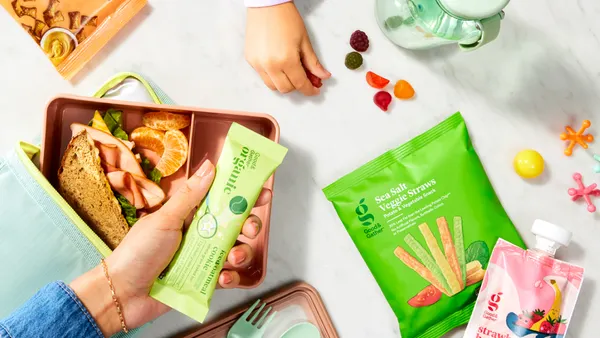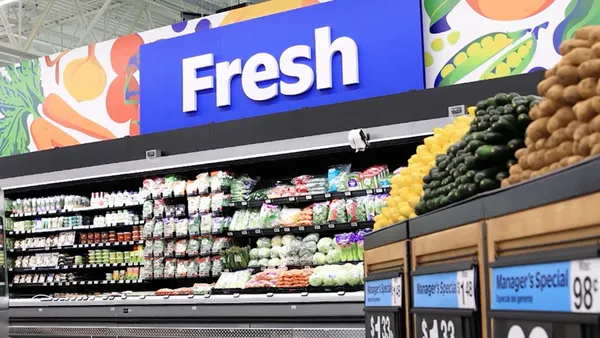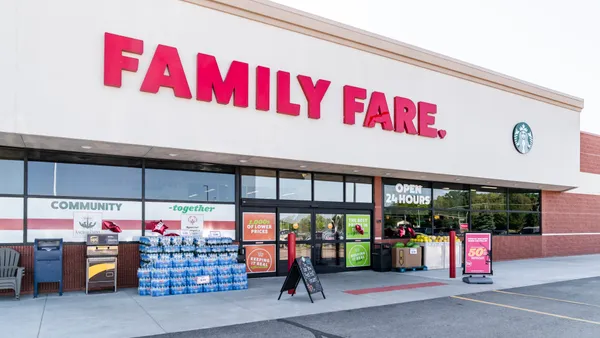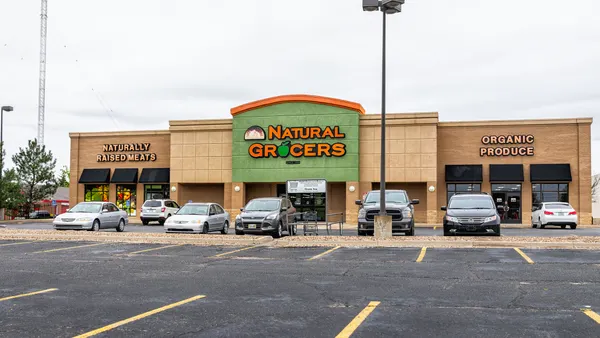Kroger and Albertsons’ newly revised divestiture plan with C&S Wholesale Grocers adds considerable heft to the retailers’ case that their proposed merger would not snuff out competition in the supermarket industry, analysts said.
But whether the sweetened package will be enough to get the embattled transaction to the finish line remains an open question, they noted.
Under the enhanced arrangement, unveiled last Monday, Kroger and Albertsons intend to sell 166 more stores to C&S than they had previously planned, along with more non-store assets and support services. The supermarket companies also reformulated the list of stores they intend to sell to C&S, although they did not provide specifics about the markets and locations that are part of the new plan.
The new plan follows the Federal Trade Commission’s announcement in February that it would seek to convince a federal judge to block the merger on antitrust grounds. The agency took a particularly dim view on C&S’s suitability as a prospective competitor to balance the power Kroger and Albertsons would gain from coming together, calling C&S “poorly positioned to operate these stores successfully.”
While Kroger and Albertsons forcefully refuted the FTC’s conclusion that the merger would hurt competitors, consumers and workers, the plan the grocers made public last week represents a clear declaration by the companies that they have heard and tried to address the agency’s concerns, said Michael Infranco, assistant vice president of retail intelligence provider RetailStat.
“I think that’s what the point of [the revised deal] was — to at least be able to say, ‘We’ve put together a standalone business and we’ve capitalized it to the point where we believe that this business will be able to compete on day one,’” said Infranco.
The new plan’s inclusion of components such as increased distribution capacity, provisions for expanded transition services and an additional dairy facility is especially significant, Infranco added.
“If you’re going to spin off something that you had as part of your business, it has to be a viable business,” he said. “You have to include everything needed to stand alone. And I think adding some of these ancillary assets and services goes a bit of a way to doing that.”
Pablo Garces, director at S&P Global Ratings, shared that view. “The additional corporate and office infrastructure will help with C&S’ operational cohesion with the additional 166 stores and in the companies’ view address the FTC’s argument that C&S would not be able to operate competitively,” Garces wrote in an email.
Jeffery Cross, an antitrust attorney who teaches at the University of Illinois Chicago School of Law, said the updated deal closely reflects the criteria the FTC has spelled out for how it expects would-be merger partners to structure divestiture agreements.
“I think this is Kroger and Albertsons negotiating with the [FTC’s] staff and hearing the staff say these are the things that we need to meet this touchstone of maintaining or restoring competition,” said Cross, who is of counsel to the law firm of Smith, Gambrell & Russell.
Cross said the grocers’ decision to bundle more assets that would support C&S’ ability to run hundreds of grocery stores is particularly noteworthy because it directly addresses the FTC’s mission of not only forcing merger partners to give up assets but also ensuring a prospective divestiture partner has the wherewithal to thrive as a competitor.
“When you get down to the [new divestiture plan], you get a lot of meat in there — the distribution facilities, the pharmacies, [which] are going to remain intact, the labor contracts they’ve got. Those are all the buttons that I would expect the FTC to be asking about,” said Cross.
Cross added that it is in the best interest of the FTC and the grocers to try to reach a settlement — known as a consent decree — before the judge assigned to rule on the agency’s request for an injunction to halt the deal has a chance to act.
“You always want to try to settle, because you don't know where the judge is going to go,” Cross said.
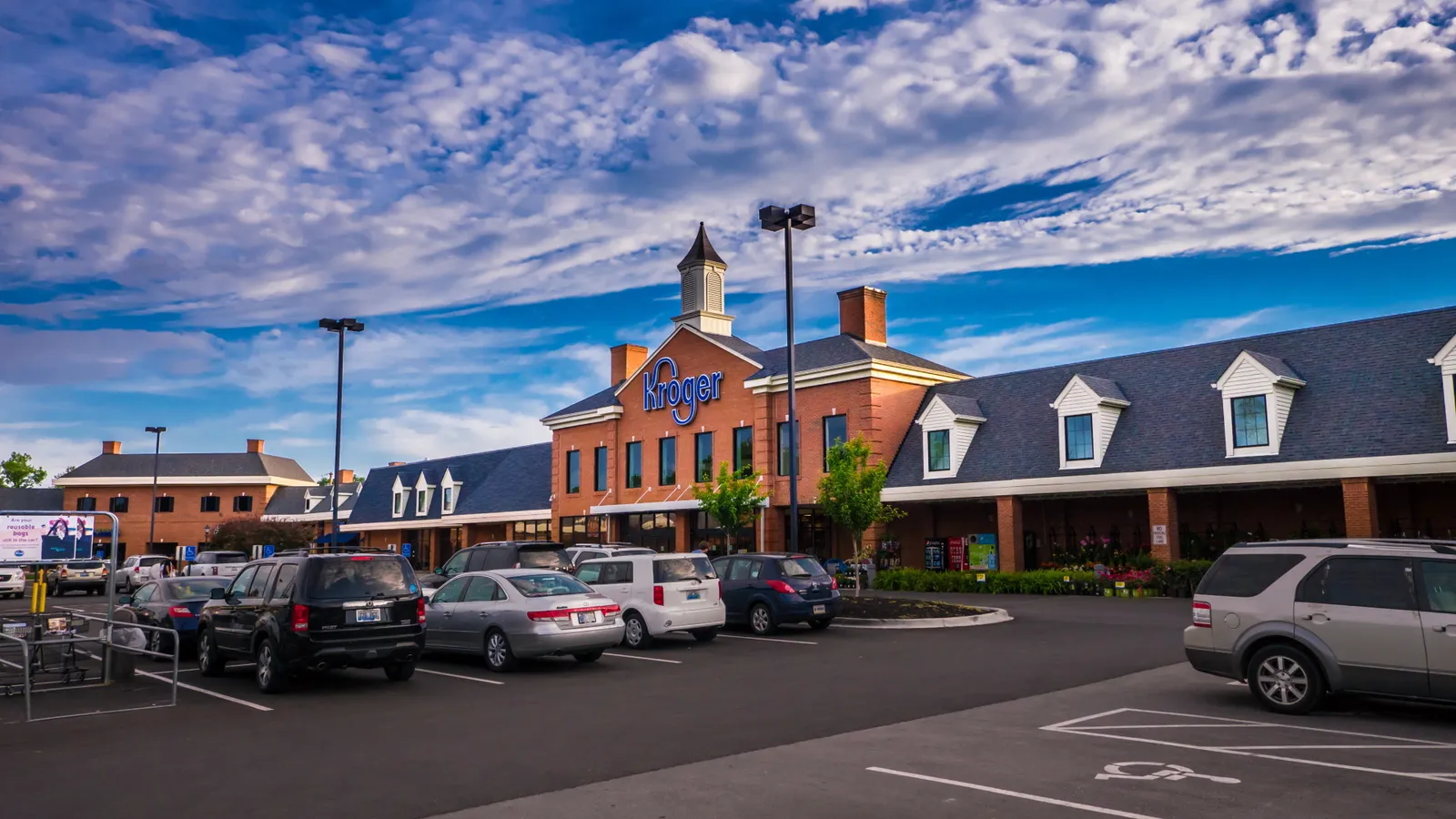
The FTC’s concerns go beyond preserving industry competition
The fact that Kroger and Albertsons may improved the terms of the divestiture deal doesn’t necessarily mean the companies are any closer to convincing the FTC to enter into a settlement, because the agency has expressed concerns about the deal that extend beyond the potential for it to reduce grocery industry competition, said Arun Sundaram, vice president of equity research for CFRA Research.
For example, the new divestiture deal does not address the FTC’s contention that Kroger and Albertsons would hurt workers by joining into a single company, Sundaram said. In addition, the agency and the grocers remain far apart over how the merger would affect food prices, with Kroger saying it would bring costs down for shoppers if the merger goes through even as the FTC argues that they would have a strong incentive to make groceries more expensive, he pointed out.
“They have a bit more leverage if they do need to go into court and fight this out … but they’ve still got to tackle all these other issues that the FTC raised,” he said.
Analysts said that even with the revised divestiture deal on the table, questions about C&S’ ability to run a sizable grocery chain remain a key risk for Kroger and Albertsons.
“It would seem that a 40% increase in divested stores would bridge the gap between the FTC and the companies,” Garces wrote. “But the competitive viability of C&S is just one of the prongs of the Commission’s argument against the merger. While I don’t expect the FTC to change its stance in response to the amended divestiture plan, it may help bolster the companies’ case in court.”
The grocers “will need to really prove that C&S will be able to take all of the stores that they’re buying from Kroger and Albertsons and make them successful over the long term,” said Rachel Dalton, head of retail insights at data analytics firm Kantar.
Sundaram agreed that Kroger and Albertsons’ choice of C&S to buy the stores continues to be a key liability for the grocers.
“I think what the FTC would have loved to see is Kroger and Albertsons pursuing additional buyers, especially buyers that are much more experienced running a grocery retail business, but it looks like Albertsons or Kroger are still committed to just working with C&S,” he said.
Catherine Douglas Moran contributed reporting.











